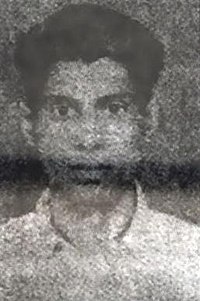Kanailal Niyogi | |
|---|---|
 Kanailal Niyogi | |
| Born | 1924 Mymensingh, Bengal, British India |
| Died | 19 May 1961 (aged 37) |
| Cause of death | Police firing [1] |
| Nationality | Indian |
| Occupation | Railway official |
| Known for | Martyr in Bengali Language Movement of Barak Valley |
| Parent(s) | Dwijendralal Niyogi Shantikana Niyogi |
Kanailal Niyogi (1924 - 19 May 1961) was an employee of the Indian Railways who took part in the Bengali Language Movement in the Barak Valley in 1961. On 19 May 1961, Niyogi became a martyr when he was shot dead by the paramilitary forces at the Tarapur railway station in Silchar. [2]
